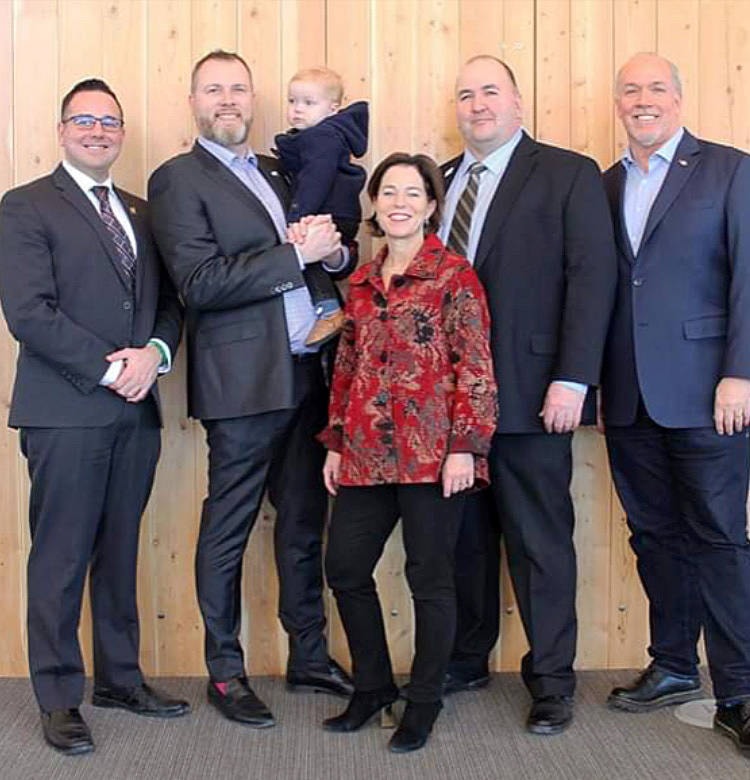The District of Houston council will be meeting with its senior staffers to decide how to best spend the municipality’s portion of a $100 million provincial grant being provided to northern governments to address infrastructure needs.
Mayor Shane Brienen said Houston’s infrastructure is aging, a circumstance faced by many other smaller communities in the north.
“The lifecycle of many of our assets is coming to their end and we’re struggling to keep to the same service levels at the same time,” he said.
The $100 million grant program was announced by Premier John Horgan during a visit to Terrace Feb. 16.
It’ll be divided between 22 municipalities and four regional districts including Fraser Fort George, Bulkley Nechako, Kitimat-Stikine and North Coast.
Local governments are free to spend the money as they see fit but must report how it is being spent.
Brienen welcomed the grant announcement, saying it’s a first step in addressing long-standing requests from northern local governments for financial assistance.
“No one will have trouble spending the money,” he added.
The District of Houston has compiled an inventory of its assets describing their conditions, how long they can be maintained and at what cost and estimates of replacement costs.
The Houston asset replacement list includes the community hall and a need for a new water well. It also needs to replace the ammonia plant in the arena.
“We’re fortunate that we have a new water tower and treatment facility but for other municipalities, that sometimes isn’t the case,” said Brienen.
Brienen noted that the community lost one of its two sawmills in 2014, a closure which resulted in a loss of approximately $600,000 a year from the municipal tax base.
At the same time, the District hasn’t been able to tap into revenues collected by the province from taxing resources.
“Since 1980 approximately $1 billion in [timber] stumpage has left this area,” said Brienen.
He called the grant program a first step toward addressing the need for northern local governments to receive a portion of provincial resource taxation revenues.
Local governments with populations of more than 10,000 people will receive between $6 million and $9 million, while local governments with populations fewer than 10,000 will receive between $1 million and $6 million.
How much each local government has yet to be finalized but the City of Terrace is saying it’s in line for $8 million while it’s understood Houston’s in line for approximately $4 million.
Smaller municipalities will proportionately receive more money than larger ones as will municipalities with a limited industrial and commercial base.
That’s to assist smaller municipalities who may want to use their money to apply to senior governments for grants from other programs. These programs typically require each level of government to contribute one-third of a project’s cost but smaller municipalities for years have argued their tax bases can’t provide their one-third.
The $100 million grant will come from the province’s existing budget.
Horgan, speaking in Terrace, called the grant program a long-overdue recognition of the needs of northern local governments.
“The rich resources and hard-working people of the northwest have long contributed more than their fair share to the prosperity of our province,” he said.
“Unfortunately the benefits of success have been slow to flow back to the region, leaving communities with aging infrastructure that does not meet their needs or the needs of industry.”
